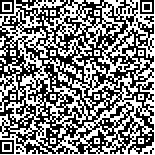下载中心
优秀审稿专家
优秀论文
相关链接
摘要

该文介绍了ERS-1(欧洲资源卫星1号)WSC(风散射计)数据结构。描述了全球雷达后向散射系数(σ°)图的成图方法。展示了中国第一幅全球雷达后向散射系数分布图。重点分析了WSC数据用于全球陆地监测的能力,并对全球典型地物的雷达后向散射系数进行了统计。研究结果表明:1.全球雷达后向散射系数图侧重反映了全球植被图和地形图的叠合信息;2.WSC数据能够以区域和全球尺度区分6类主要的地表覆盖类型。它们是:沙漠,草原,冻原、湖沼和湿地,高大山脉、无植被高原、岛屿和针叶林,热带雨林,雪原、冰盖。其中根据σ°值的分布对沙漠的分类具有独到见解,将全世界沙漠划分为3类,提出了划分依据。
关键词:
WSC(风散射计) 后向散射系数(σ°) 陆地监测 水份含量 粗糙度This paper introduces the acquisition and the stucture of ERS-1 WSC data. Map production method for the backscattering coefficient from global land surface is described. The global covering cases of the WSC data are analysed. The first global backscattering coefficient image in China is presented. The capability of ERS-1 WSC data for monitoring global land surface is investigated. Results indicate that the global backscattering coefficient image of the world is the synthesis of global vegetation image and terrain maps. Six types of main land surface coverages could be discriminated with WSC data, including: deserts; grassland; tundras, marshland and wet land; mountains, unvegetated highland, islands and needleleaf; tropic rain forest; snow field and ice cap. The global desert is classified into three types based on the distribution of the backscattering coefficients. The possible reasons are that the desert in different latitude have much difference in the moisture, the type of vegetation and roughness.

